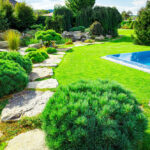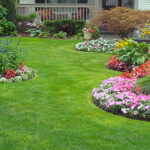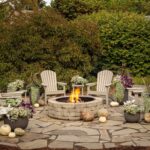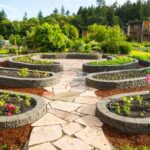Landscaping design involves the intentional planning and arrangement of outdoor features to enhance the aesthetic appeal and functionality of a space. Whether it’s a residential garden, commercial property, or public park, landscaping design plays a crucial role in creating a visually pleasing and inviting environment for people to enjoy.
One key aspect of landscaping design is the use of a variety of plants and materials to create different textures, colors, and shapes throughout a landscape. By carefully selecting and arranging plants, trees, shrubs, flowers, and hardscape elements such as rocks, pathways, and water features, designers can create a harmonious and balanced composition that complements the surrounding architecture and natural environment.
Another important consideration in landscaping design is the overall layout and organization of a space. Designers must take into account factors such as traffic flow, focal points, sight lines, and functional areas to create a cohesive and practical design that encourages movement and engagement within the landscape. This may involve creating separate zones for different activities, such as lounging, dining, gardening, or playing, as well as incorporating pathways and seating areas to enhance accessibility and usability.
In addition to plants and layout, lighting is also a crucial component of landscaping design. Properly placed lighting can highlight key features, create ambiance, and extend the usability of a space into the evening hours. Whether it’s soft, ambient lighting for a relaxing outdoor lounge area or bright, task lighting for a functional cooking or dining space, designers must carefully consider the placement, intensity, and type of lighting fixtures to achieve the desired effect.
Water elements, such as ponds, fountains, and streams, can also enhance the beauty and tranquility of a landscape design. Water features not only add visual interest and movement to a space but also create a soothing atmosphere and attract wildlife. Designers must carefully plan and integrate water elements into the overall design to ensure they complement the surrounding features and enhance the overall aesthetic appeal of the landscape.
Ultimately, landscaping design is a creative and collaborative process that requires a careful balance of art and science. Designers must consider the unique characteristics of a site, the needs and preferences of the client, and the principles of design to create a well-designed and visually appealing landscape. By incorporating a variety of plants, materials, layout elements, lighting, and water features, designers can transform an ordinary outdoor space into a beautiful and functional oasis that enhances the quality of life for those who experience it.
















